
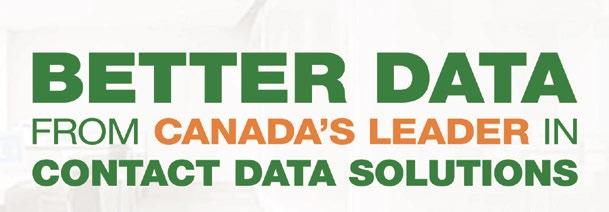


Gain a fresh perspective on Canada’s distinct communities and markets VOL. 35 • NO. 10 • OCTOBER 2022 THE AUTHORITY FOR THE DATA-DRIVEN BUSINESS PM40050803 ❱ 7 Targeting the Young Affluent ❱ 17 What Does Content Marketing Mean? THE CUSTOMER EXPERIENCE Interview With Colin Shaw ISTOCK/ METAMORWORKS
We’ll Help You Keep It Clean
Dealing with bad data is a task no marketer needs on their checklist. Inaccurate, outdated, and duplicate records can build up in your database, affecting business decisions, the customer experience, and your bottom line. As the Address Experts, Melissa helps our customers improve their direct marketing efforts with the best Address Veri cation, Identity Veri cation and Data Enrichment solutions available. We validated 30 billion records last year alone, which is why thousands of businesses worldwide have trusted us with their data quality needs for 37+ years.

Melissa.com 800.MELISSA (635-4772) Trust the Address Experts to deliver high-quality address veri cation, identity resolution, and data hygiene solutions.
Contact us for a Free Proof of Concept and ask about our 120-day ROI Guarantee. BAD DATA BUILDUP Missed Opportunities Returned Mail & Packages Decreased Customer Insight Real-time Address Veri cation Change of Address/NCOA Processing Geographic & Demographic Data Appends DATA CLEANLINESS
EDITORIAL CONTACT:

DM Magazine
published monthly by

Inc.
Magazine may be obtained through paid
1 year (12 issues $48)
years (24 issues

1 year (12 issues $60)
years (24
DM Magazine is an independently-produced publication








affiliated in any way with any association or organized

nor with any
produced either in
or the United States. Unsolicited








welcome. However unused manuscripts will not be returned unless accompanied by sufficient postage.
DM Magazine provides its subscriber mailing list to other companies whose product or service may be of value to readers.
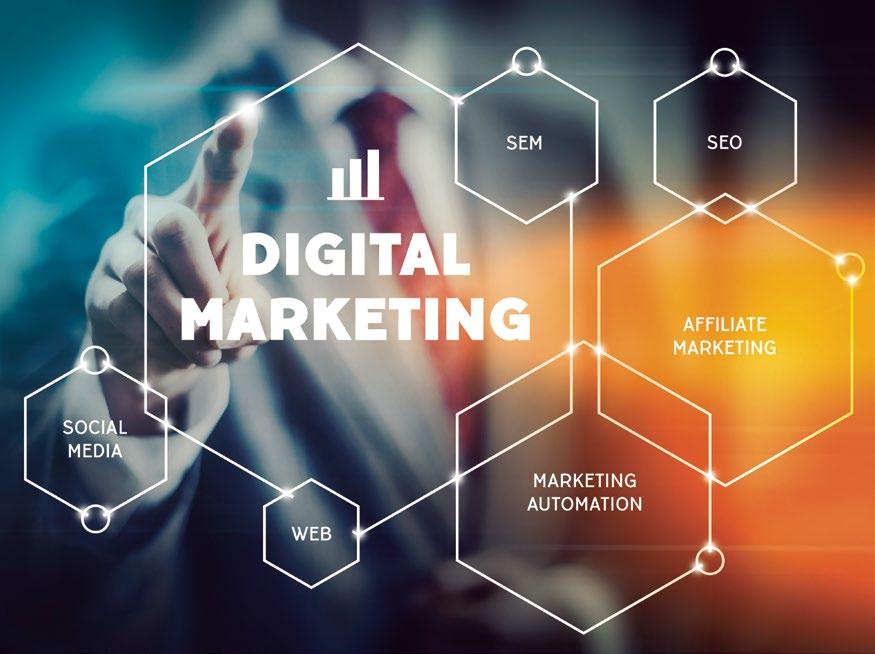





















way












you do not want to receive

// 3 OCTOBER 2022 DMN.CA ❰ Vol. 35 | No. 10 | October 2022 PRESIDENT Publisher & Editor-in-Chief Steve Lloyd - steve@dmn.ca DESIGN / PRODUCTION Jennifer O’Neill - jennifer@dmn.ca ADVERTISING SALES Steve Lloyd - steve@dmn.ca CONTRIBUTING WRITERS Azeem Adam Hamed Amiri Gabriella Ciaccio Lyra Hankins Stephen Shaw LLOYDMEDIA INC. HEAD OFFICE / SUBSCRIPTIONS / PRODUCTION: 302-137 Main Street North Markham ON L3P 1Y2 Phone: 905.201.6600 Fax: 905.201.6601 • Toll-free: 800.668.1838 home @dmn.ca • www.dmn.ca
is
Lloydmedia
DM
subscription. Rates: Canada
2
$70) U.S.
2
issues $100)
not
group
publication
Canada
manuscripts are
Occasionally
If
information this
simply send your subscriber mailing label with this notice to: Lloydmedia Inc. 302-137 Main Street North Markham ON L3P 1Y2 Canada. POSTMASTER: Please send all address changes and return all undeliverable copies to: Lloydmedia Inc. 302-137 Main Street North Markham ON L3P 1Y2 Canada Canada Post Canadian Publications Mail Sales Product Agreement No. 40050803 Twitter: @DMNewsCanada STRATEGY TRENDS & RESEARCH NEXT ISSUE: An overview of Canada’s marketing awards and the latest winners. TARGETING ❯ 7 The Young Affluent: Tips to Capture Their Potential ❯ 17 Business to Business in 2023 Content is King: What Does it Mean? FULFILLMENT ❯ 4 Talking Points talkingpoints ON THE COVER INTERVIEW ❯ 10 The Customer Experience Gap: An Interview with Colin Shaw, CX Pioneer and Founder/CEO, Beyond Philosophy ❯ 19 8 Digital Marketing Trends to Watch in 2023 ❯ 22 Today’s Top 5 Third-Party Logistics Trends ISTOCK/ KIEFERPIX ISTOCK/ DZIGGYFOTO ISTOCK/ MIKKO LEMOLA ISTOCK/ TRIFONOV_EVGENIY
talkingpoints





The Greatest Helmet of All Time: A Tale of Inclusion and Creative Problem Solving.
The female founders of Toronto-based innovation agency launch a children’s book to help the next generation tap their creative potential. Just in time for the holiday season, female co-founders and Presidents of Torontobased innovation agency The Idea Suite, Shelli Baltman and Fiona Stevenson, have written a picture book designed to unlock the creative potential of the next generation of innovators. As professional leaders in their fields and moms to three children under the age of 12, Baltman and Stevenson share a strong belief that every child deserves to learn creative problem solving, design thinking and entrepreneurship skills, to prepare them for a future evolving at an unprecedented pace.
The book, The Greatest Helmet of All Time, tells the story of a group of animals who notice their friends with horns can’t participate safely in sports requiring head protection, because helmets aren’t designed for horns. They join forces and go through a six-step creative innovation process resulting in the creation of the “Greatest Helmet of All Time” — a universal helmet that fits every kind of horned head. Through the engaging and humorous story, young readers between the ages of five and 10 are exposed to the same design thinking skills and frameworks that are used at the most innovative companies in the world.
“Today’s youth face an uncertain future full of complex global challenges,” says Shelli Baltman. “Gaining a solid foundation in creativity, entrepreneurship and innovation from a very young age will help prepare our kids for the challenges they will likely face. Entrepreneurial and creative problem-solving skills will allow them to adapt and thrive, regardless of market conditions.”
As their business has grown, the cofounders have become passionate about activating their mission within marginalized communities and underserved populations, including empowering children with creative problem-solving concepts and frameworks
to help them recognize their innate creativity. Twenty-five per cent of the royalties from the book will be donated to Free for All Foundation, whose mission is to make productive citizens of children who are at risk of not realizing their full potential.
“We hope the book teaches kids to identify problems or opportunities around them and gives them the confidence that their curiosity and a simple design thinking framework can truly help them solve any problem — no matter how insurmountable it may seem,” says Fiona Stevenson.
The Greatest Helmet of All Time, $19.99, will be available at Amazon.ca, starting November 1, 2022. To ensure access for every child, The Greatest Helmet of All Time will be available as an e-book for $0.99.
The Idea Suite is a boutique innovation agency with a mission to unlock the creative potential of people and businesses through innovation.
operations. Lightspeed Advanced Insights gives restaurant owners confidence to make quick decisions they trust to improve their business by providing analytics that go way deeper than traditional reporting.”
Magic Menu Quadrant: Break down specific menu items at-a-glance in terms of “One-Hit Wonders”, “Greatest Hits”, “Underperformers”, and “Hidden Gems”. Measure the success of a menu change in real-time and make strategic adjustments to offerings with data from menu performance.
Sales: Sales analytics make it easy to understand day-to-day operations and compare sales trends over time. Empowered with the actual data behind restaurant operations, easily make business decisions regarding staffing, locations management, as well as identify which menu items are bringing people back in for more.
Servers: Get an insightful personalized report card for each server to identify the rockstars, help boost their earnings, and uncover coaching opportunities to confidently make decisions that impact the bottom line.
Lightspeed Restaurant Adds to Data and Analytics with New Advanced Insights Feature.



Lightspeed Commerce Inc., the one-stop commerce platform for merchants around the world to simplify, scale, and create exceptional customer experiences, today announced the expansion of its flagship hospitality product, Lightspeed Restaurant, to include Lightspeed Advanced Insights.
The best-in-class-solution has taken a step further in empowering restaurant owners to make confident business decisions using clear and actionable insights from analytics that work seamlessly in the background. Powered by Lightspeed Payments, the Lightspeed Advanced Insights add-on eliminates guesswork with instantaneous analysis for actionable insights. Data from every transaction processed is automatically captured, analyzed, then delivered right back to restaurateurs - identifying trends, such as which menu items will turn a guest into a repeat customer or which staff member is performing at top level, that reveal impactful ways for merchants to optimize their business.
“Restaurants are doubling down on technology and automation, and we are continuing to deliver,” said Peter Dougherty, GM, Hospitality, Lightspeed. “In pursuit of empowering independent businesses, we are thrilled to offer yet another powerful solution that will allow restaurateurs to optimize their
Guest Book Lifts Consumer Lifetime Value: Creating a unique guest profile for everyone who pays with a credit card, Guest Book automatically collects useful data on each guest such as preferred payment methods to determine which devices and flows increase ticket size and cover count.
Campaigns: Define a time range to dynamically track sales and visits compared to the restaurant’s average. Use data to identify how guests respond to new hours, events, or marketing pushes.
Daily Digest: Review daily highlights including logbook, shift notes, pay in and payout. Raw data is translated into understandable insights alongside qualitative feedback from servers.










Logbook: Logbook makes it easy for staff to record comments from the day’s shift. Customize the questions and checklists to suit your restaurant’s unique operations.
“Lightspeed Advanced Insights helps us break down how a server is performing in terms of hitting upselling goals,” said Jared Downs, Owner and Operator of Freshwater Tavern. “We can quickly look at if they are getting customers to add craft cocktails to 20 percent of meals, for example, or selling a bottle of wine to 5 percent of tables. Every restaurant has different priorities and Lightspeed can program around those priorities, but for us that information is super valuable and it helps us work with servers for them to get higher sales and thus more tips.”
Lightspeed sales data from nearly 6,000 US hospitality merchants shows that while inflation rose 8.26 percent on a year-overyear basis in August, menu prices have only increased 5.56 percent, on average, over the same period. At the same time, food costs are






// 4 ❱ DMN.CA OCTOBER 2022
■ ■ ■ ■ ■ ■ ■ ■ ■ ■ ■ ■ ■ ■ ■ ■ ■ ■
pacing ahead of inflation. When adjusting for inflation, this means margins for restaurants are going down.* Lightspeed Advanced Insights enables restaurant owners to make decisions that directly impact their business by understanding top spending customers, waitstaff performance, busiest hours and day of the week and menu items that generate repeat customers.
Lightspeed powers the world’s best restaurants, including: Five Guys, Daniel Boulud Group (NYC), Alinea Group (Chicago), Canlis (Seattle), Gloria (London), Kei (Paris), 893 Ryōtei (Berlin) and Maybe Sammy (Sydney). These new Lightspeed Restaurant features are now available in North America.
Lightspeed looked at data from nearly 6,000 US hospitality merchants, from August 2021 - August 2022, which included casual restaurants (50 percent), upscale restaurants (21 percent), bars (15 percent), and fast-casual restaurants (14 percent). Comparisons to inflation growth are based on the year-overyear inflation rate of 8.26 percent in August 2022 (Source: US Inflation Calculator
Top Toys List For Holiday 2022.
This holiday season, Toys”R”Us Canada is helping parents and gift-givers create special moments with their highly anticipated Top Toy List for 2022. Featuring a broad assortment of gift ideas for every age and interest and highlighting twelve hero products, Toys”R”Us is making holiday gift-shopping easy. From collectibles to active-play gear to play sets featuring kids’ favourite characters, this year’s Top Toy List encourages grownups to wrap up an extraspecial gift that sparks hours of imaginative play — and years of memories.
“We want to give parents, grandparents, relatives — anyone buying for kids they love — the tools to spark young imaginations, to send them in new directions,” says Allyson Banks, Marketing Director at Toys”R”Us Canada. “We’ve hand-picked really special toys, games and gear that will deliver huge thrills for kids — and make big heroes of the grownups who give them!”
This year’s Top Toy List includes items exclusive to Toys”R”Us, like the LiteHawk Highway Patrol Slot Car Set, the LEGO City Freight Train, Rainbocorns Unicorn Rescue Surprise and Bluey’s Ultimate Caravan Adventures Play Set. In addition to the 12 hero toys, there are tons of terrific gift ideas online and in the Toy Book to suit every budget.

The Top Toys are rolling out in-store and online at toysrus.ca throughout October and November. It’s a brilliant tool to help grownups get that holiday shopping done
early! The categories include Action Figures; Arts & Crafts; Blasters; Books; Building Sets and Blocks; Dolls & Playsets; Educational Toys; Games and Puzzles; Interactive Pets & Toys; Plush and Stuffed Animals; Pretend Play & Dress up; Toddler & Preschool Toys; Trading cards & Collectibles; Vehicles, Trains & Playsets.
Brands Put Customer Relationships at Risk. Merkle Research Reveals How Customer Data Strategies Play a Crucial Role. Merkle’s Customer Engagement Report explores critical gaps in how brands manage customer data, the impact on business growth, and key steps to getting back on track. Merkle, dentsu’s leading technologyenabled, data-driven customer experience management (CXM) company, released its Q3 2022 Customer Engagement Report (CER) highlighting priority areas for CX, data, and technology leaders. The report explores what’s behind the ongoing disconnect between the high marks brands give to the quality of the customer experiences they create versus the comparatively low grades awarded by consumers.
Merkle surveyed more than 600 marketing and technology decision makers of major companies ($100 million +) from the US and UK. Key gaps were found between their self-assessment and their actual approach to customer data — gaps that correlate with the disconnect in their customers’ assessments of their own experiences with these brands.
For instance, while most leaders (85 percent) give themselves high marks for customer experience (CX) maturity, only a small group actually meets best-practice benchmarks. Just 32 percent of respondents utilize data across the entire enterprise; less than 25 percent have migrated all customer data to the cloud; and only 24 percent manage all their campaign data in a central repository. The results highlight the rough patch brands and consumers are experiencing and the critical pitfalls many companies need to address before they get dumped.
“Customers’ changing expectations and the need for data integration have long been documented, but even as brands attempt to deliver personalized experiences, there still remains a breakdown between what is ultimately delivered and what customers are actually seeking in these relationships,” said Courtney Trudeau, vice president of technology strategy at Merkle. “We’ve identified the tough conversations brands need to have to ensure they aren’t driving consumers away. Even the most brand loyal consumers aren’t safe if this disconnect in both priorities and business practices isn’t addressed.”
Additional takeaways include: Brands are missing the mark by not utilizing
customer data throughout the enterprise. The survey found that the biggest barrier to advancing toward the goal of personalization at scale is a lack of consistent audience segmentation across channels (25 percent), followed by siloed or unaligned teams (24 percent). When customer data isn’t uniformly made available for use across the company, each of these groups builds its own siloed data constructs from the ground up. With this kind of data strategy, brands are unable to see a full picture of their customers or the data itself, placing themselves at a severe disadvantage and limiting the speed at which innovation may be applied.
Separation of data undercuts CX personalization. A lack of emphasis on the customer data foundation that underpins the larger success of a martech stack ultimately constrains the ability to utilize its full capabilities and/or its individual components. The CER survey revealed that, while more than 72 percent of respondents have achieved the ability to deliver data-driven CX across more than one channel, only 15 percent are able to power full omnichannel personalization, and barely 20 percent prioritized improvements to customer data. This places brands at a serious disadvantage when customer data must be properly integrated, formatted, governed, and available in real time for a sophisticated CX stack to deliver as promised.
Lack of data is not just a problem for marketing, but the whole organization.
Relying on CRM systems or integrations across channel-based platforms to store customer data restricts the ability to analyze and drive decisions from complex data sets in real time. The survey revealed that only a quarter of respondents have their campaign data in a central data store. Unless brands have strong internal resources who will be able to devote much of their attention to bringing data together into one cloud-based repository and drive the realization of your use cases, this could be a huge gap in the process.
Merkle, a dentsu company, is a leading datadriven customer experience management (CXM) company that specializes in the delivery of unique, personalized customer experiences across platforms and devices.
ClickSpace Opens Doors to eCommerce Entrepreneurs.
ClickSpace, the Montreal-based eCommerce hub opened its doors in celebration of small

// 5 DMN.CA ❰OCTOBER 2022
). ■ ■ ■ ■ ■ ■ ■ ■ ■ ■ ■ ■ ■ ■ ■ ■ ■ ■
■ ■ ■ ■ ■ ■ ■ ■ ■ ■ ■ ■ ■ ■ ■ ■ ■ ■
■ ■ ■ ■ ■ ■ ■ ■ ■ ■ ■ ■ ■ ■ ■ ■ ■ ■
talkingpoints



















business month. Local entrepreneurs were invited to discover its breadth of services as part of a unique open house event at its District Central headquarters.
“It is Canada’s first hub dedicated to eCommerce. ClickSpace aims to be an example of innovation.”



The new 13,500 square foot mega complex with a multitude of integrated services offers small and medium-sized businesses space for collaborative work, professional services, as well as optimized order fulfillment services; ClickSpace is a solution for local eCommerce entrepreneurs who want to make their mark online. Its mission is simple: help propel e-commerce entrepreneurs in a modern, collaborative workspace with all the resources they require to reach their full potential.
Simon Berman, a Montreal-based entrepreneur and co-founder of ClickSpace is excited to open ClickSpace’s doors to the general public: “It is Canada’s first hub dedicated to eCommerce. With ClickSpace we aim to be an example of innovation and a key player in the economic recovery, in particular by supporting entrepreneurs whose eCommerce activities were developed during the pandemic.”
Throughout the event, participants will be invited to join special activities and to receive a complimentary LinkedIn profile photo session. The Ladies who Launch event for female entrepreneurs, sponsored by Scotiabank Women’s Initiative, will feature renowned businesswoman and media personality Danièle Henkel (Henkel Media), along with founders Virginie Roy (Proud Diamond), Laura Nezri (Maison Tess) and Hanna Hajilou (A La Table by Hanna). As for Midday Squares co-founder Jake Karls, he will be leading an interactive conversation on the power of storytelling and authenticity in brand building. The open house will also bring participants together for a happy hour cocktail networking event hosted on ClickSpace’s outdoor co-working space and rooftop terrace.
More than a co-working space, ClickSpace stands out for the scope and flexibility of its
fulfillment and storage services, all integrated within office spaces with quality professional services and a dynamic business community. Management services for inventory, warehousing, integrating online platforms, order processing and shipping and handling, among others, are all offered at accessible prices to support new start-ups and small businesses. The contributions of 3DM, a logistics solutions partner, positions ClickSpace as a unique model within the country.
The workloft spaces have reserved private office spaces with storage spaces inside, conference rooms, and a hybrid event, content creation and podcasting studio. They can also be adapted according to the needs of online businesses, no matter how many employees they have or need. Entrepreneurs who only want to have an official business address can use the “virtual address” and take advantage of ClickSpace’s reception services.
ClickSpace’s hand selected partners have been tasked to support ClickSpace members and offer exclusive à la carte professional services and expertise. Whether it’s design, logistics management or marketing, these partners are able to respond to e-commerce businesses’ needs thanks to their expertise.
Furthermore, becoming a ClickSpace member also means joining a group of individuals and teams who become the ClickSpace community. Educational resources such as seminars, webinars and events with professionals, top-ofthe-line services and seasoned mentors are also made available to members.

“Studies have shown that coworking is associated with increased work satisfaction and productivity for entrepreneurs. We’ve built ClickSpace upon these findings and we want entrepreneurs to think of our space as a tool of empowerment towards their success in this sharing economy,” explained Margaux Chetrit, ClickSpace’s managing director.
most significant transition in decades, as women who wear plus sizes bring new attitudes and new demands to the fashion they wear and the businesses they support.
“Over the past couple of years, we’ve done a complete deep-dive into our business that included hundreds of hours of consultation with our customers,” says Michael Strachan, PENN.’s President. “We wanted to find the right way to position the company for the future in order to attract new customers who have changing attitudes while still respecting the needs of our long-standing, loyal customers.” No aspect of the business has gone unexamined. The comprehensive PENN. refresh includes store renovations, new stores, enhanced customer service, new and refined product programs, expansion and changes to eCommerce and, as mentioned, new branding and marketing. As well, after some corporate reorganization, PENN. has revived the fashion-forward Addition Elle brand which is available in all PENN. stores and at www. penningtons.com.
As part of a dynamic three-year plan, the company will add ten new stores in key markets with an emphasis on growing its presence in Ontario and Quebec. PENN.’s growth strategy will concentrate its efforts on key aspects of the business including Apparel Growth, Real Estate Acquisition and driving awareness of its rebranding, all to attract and introduce new customers to the brand.
In this new era of body positivity — as women continue to embrace their physical diversity — PENN. has been there every step of the way. “Women today are not willing to be defined by their size,” says Rosalba Iannuzzi, Vice-President Merchandising, Design and Technical. “There are no limitations. Our customer comes to us looking for solutions and comfort. We achieve this by offering fabrics that suit her needs, and through a relentless focus on fit. Fit is a feeling, not a size. She also comes to us so she can always be on trend, and that’s exactly what we are giving her. We use our expertise to ensure the clothing we offer looks — and feels — good on her.”
Penningtons Revitalizes and Rebrands. New Energy and Excitement in Plus-Size Fashion. Penningtons, the fashion retailer at the heart of plus-size fashion in Canada, is undergoing a major, wide-ranging revitalization that is impacting virtually every aspect of its business — including new branding and a dynamic new logo with the word “PENN.” With ninety retail stores coastto-coast and a thriving eCommerce business, PENN. is a driving force in the fashion industry’s
Changing attitudes driven by a younger consumer have allowed PENN. to bring new energy, creativity and positivity to the PENN. community. “We’re breathing new life into a successful brand,” says Kathy Tsolakos, VicePresident, Marketing, Visual Presentation and eCommerce, discussing the company’s momentum and enthusiasm. “It’s what’s driven our extensive overhaul including product design and offerings, digital growth, brand perception and positioning, and marketing. We love seeing our customers become excited about the changes we are making. And we’ve done it all by listening to them.”
Penningtons is Canada’s premiere destination for plus-size fashion, ranging from sizes 14 to 32.

// 6 ❱ DMN.CA OCTOBER 2022
■ ■ ■ ■ ■ ■ ■ ■ ■ ■ ■ ■ ■ ■ ■ ■ ■ ■
The Young Affluent: Tips to Capture Their Potential

 BY LYRA HANKINS
BY LYRA HANKINS
Younger consumers are a valuable segment for most marketers. They offer significant opportunities for future growth, customer lifetime value, and long-term ROI. Businesses that focus on marketing to young audiences are making a strategic investment in developing new relationships. They hope these relationships will turn into long-term revenue streams.
But, not all young consumers are the same. In fact, less than 20 percent of young households control more than 80 percent of the generation’s wealth. These 20 percent are the young affluent.
When we say young affluent, who exactly are we talking about? Let’s break it down to what we mean by young, and what we mean by affluent. Young consumers include Gen Z and Millennials ages 20-39.
But, young, affluent consumers are what most would consider to be wealthy. These consumers on average hold over $250,000 in total investable assets. That figure belongs to an audience that marketers should not ignore.
The difference between young affluent consumers and young non-affluent consumers is staggering. In fact, in comparison to young non-affluent consumers, young affluent households have:
2.4x higher income – with young affluents averaging almost $150,000 in income
11.7x higher deposits – with young affluents averaging almost $250,000 in deposits
❯ 26x higher investments – with young affluents averaging over $1 million in investments
3x higher discretionary funds – with young affluents averaging over $170,000 in discretionary funds
While many young consumers are focused on paying their bills and may even be living paycheque to paycheque, the young affluent are likely to have extra funds to spend as they please, or to save for the future.
// 7 DMN.CA ❰OCTOBER 2022
❯
❯
❯
TARGETING ISTOCK/ KIEFERPIX
Guide
Find



path to new major donors and sponsors.
into
Giving Guide

get








charity’s story and key mission statements,










major gift programs, sponsorship



guide to help major individual donors





donor stories into Toronto’s largest offi

new ways
senior
Greater Toronto Chapter ASSOCIATION PARTNER FOUNDING PARTNER
your
Get
the 2022 GTA
and
your
fundraising campaigns,
opportunities, accomplishments and
cial
and corporate foundations fi nd
to support your efforts. Reach more than 20,000
executives in marketing, fi nance and C-Suite leadership in the largest fi rms in the Toronto area. Headquarters of companies which allocate millions of dollars for donations, sponsorship, social programs, volunteering, governance, advice and insights. And whose leaders and proven individual donors. Get your organization’s message in front of business leaders and potential donors and volunteers. Each Ad includes equivalent space for editorial opposite your Ad, for all the details go to http://foundationmag.ca/gtagivingguide/ TORONTO’S CORPORATE PATHFINDER TO CHARITABLE INVESTMENT For more information call Steve Lloyd, 905-201-6600 x225 or steve.lloyd@lloydmedia.ca Guide 2021 GTA GIVING GUIDE The Animal Guardian SocietyI over Asling 8-week-old street. She called everylink to the and ran advertisementher local reporter ad calledcoverAlthough ever located, received almostadopt the instinctivelyprospective conducted Kathybut numbersfamilies she provide loving dog. Thevisited the startedcontacting who had to adopt. Identifying the someone to thelives from being Kathy andcreated Animal(TAGS). 1987 the Region basedKathy with could mentorinto developing that withintegrity would humane educationcommunity and displacedPerhaps cult task days waswith Animal Rescueforeign constant animalsresearch taskemotionally physical draining. became evidentnot the person. KathyNow 30 thousands successfullyyet to her corpsclosely shelters, societies, andimprove canine citizens.Today, TAGS non-profi and doesgovernment are entirelydonations Other than donations,TAGS pet care qualityand blankets, collars, toys,We items materials andAnimal microchip becomeoffering microchip Toronto Regionanimal we know importantYou what willfuture advise responsible owners toappointment for painlessprocedure. be safe otherexpensive out there, thatdecide with their petsbecause price. That initiatedmicrochip, saving amount of money paying$90 revenue goes good causecats in Animal Society.Use100% donations goes animalswe have TAGS’s byfar bills. We that alland means medicationsor surgeries hundreds thousandsall TAGS spayed or vaccinatedand microchipped to adoption. TAGS is fortunatesome donations food, we moneypurchasing food in fosterexpenses productioneducational promotional material.visit our www.animalguardian.orgour donation information at https://www.canadahelps.org/en/dn/13492 Statement the operation programcontinue protect citizenscommunity.To never animal abused, or leftTo continue medical training toTo construct that will housinguntil permanent are found.ensure shelter offers learningoursee no deathbecause they duespace. those lovestandthe causesee the will noanimals loving We welcome feedback questions.feel free with commentsGeneral information about our volunteering: tagsinfo@animalguardian.orgTelephone: 905-263-TAGS (8247) 2021 GTA GIVING GUIDE I ageless recognize everyone'scontribution stage.2005 from the CentresNew Initiative Mobilizingexcellence, together researchers partnersprivate, non-profi sectors. Improving care the elderly.knowledge action. Hear mainclose the evidence-based andactual improve existingeducational and interest studentsin geriatric positivefor the adults. Our newlearn more www.nicenet.ca/talk2nice are HomeShareintergenerational solutionby Initiativethe Elderly work to adult homeproviders students to benefi www.canadahomeshare.com not-for-profi charitable organization.donation NICE continue practicalevidence-based tools addressingspectrum relating towww.nicenet.ca/donate Bloor 234, 1V4more charitable taxwww.nicenet.ca/tools Toronto, Canadawww.nicenet.ca nicenetadmin@utoronto.ca practitioners,international dedicatedimproving spectrumdisciplines includingmedicine, nursing, themselvespsychology, best NICEdiverse second National Initiative for the Care of the Elderly (NICE) National Initiative for Careof the Elderly (N.I.C.E.) foundationmag.ca How Will You Leave YourMark on the CommunityYou Called Home? The Riverwood Conservancy I 1902, donated funds equiphospital people inFive with donorscontinue patients’ vitalare not governmentThrough support equipment,and donorsprovide inspireimpact legacyheart and ensurescare for seasonal regional patients.Ross Memorial Foundationgenerations people thatsupports honouredcommunity. yourhere questions. the rolein advancing forKawartha Lakes. touch CFRE, Foundation705-328-6113 ecoons@rmh.org www.rmh.org/foundation 2021 GTA GIVING GUIDE Riverwood Mississauga, www.theriverwoodconservancy.org/donate/ timechild’s development. can communities. offers members theriverwoodconservancy.org/natureforkids BN889418034RR0001 T Conservancy andmember-based charity programsfocused education,gardening, horticulture. theCouncil, Conservancylike-minded abilitiesindividuals connectlearn about protecting experiencingthe Riverwood. community harmonyMission: Riverwood Conservancy charityprograms and Riverwood,nature on the Riverin Our peopleages, and respectfullyand learn importance conservingspaces futurealso experiencing beauty gardens.donors theand and educationour work strengthen betweenPlease to learnhistory, programs offered TORONTO BUSINESS DISTRIBUTION November 2022 GTA Giving
2022
The opportunity held by young affluents is clear, but winning their business is not easy. They are often distracted by constant social media and news updates. Their buying behaviours may also be inconsistent, and they are less loyal than older generations. Since there are only about 5.8 million young affluent households, marketers need to focus on fine-tuning their strategy to find and market to this valuable audience. Find and target the young affluent – and determine which can spend more
❯
It is important to identify new, younger audiences that are good targets for your business. That being said, marketers need to reach consumers that have two key characteristics:
❯
An interest in your offer
The financial ability to buy it
While life-stage segmentation can be useful, it often falls short in differentiating which younger consumers are able to afford a company’s products and services.
That’s where consumer financial insights — such as likely affluence and spending power — can help. Consumer financial insights are anonymous, aggregated measures that can help marketers better understand consumers’ financial health. These insights also help marketers spend, save, or invest.
Marketers can combine consumer financial insights with life-stage and category transaction data. This allows marketers to identify and target younger affluent prospects and feel confident. For example, one upscale travel company determined the affluence level of its existing older customer base. Then use that metric to find prospective young consumers with the same or higher affluence level for new customer acquisition programs.
Marketers can apply consumer financial insights to their current customer base to identify which of their young customers are affluent and can likely spend more.
It’s no secret that many younger consumers have damaged, thin or non-existent credit files — even if they are affluent. Plus, credit scores may not incorporate other financial information that could be relevant to inform segmentation and lending decisions.
To overcome the limitations of relying on credit scores, credit and insurance issuers can use consumer financial insights to identify younger, affluent prospects that are likely to have the traits that will result in a profitable lending relationship. One way to do this is to boost segmentation for young audiences before pre-screening. You can do this by differentiating young households that are likely to have high affluence, income, or financial durability.
According to an Equifax analysis, among all consumers with a modest 580 credit score, 10 percent have estimated total household income over $178,000. By relying only on credit scores, this audience might have been overlooked. With enhanced insight on likely consumer finances for young affluent consumers, marketers can better identify hidden opportunity for their offers.
Connect with young affluent consumers through their devices
Marketers know that young consumers are digitally focused. That is why your messages and offers need to be delivered where young affluent consumers are likely to see them.
To better reach young affluents and boost targeting for mobile, display, and social acquisition campaigns, marketers can leverage financially based digital targeting segments. For example, marketers can target Millennial audiences such as:
❯ 5.6 percent of households that are likely to include Millennials that are on the road to wealth
❯ 12.5 percent of households that are likely to include Millennials with discretionary spending > $50,000
❯ 12 percent of households that are likely to include Millennials with income > $100,000
If your CRM system is filled with physical addresses, then consider broadening your marketing reach. You should onboard young affluent segments to deliver your ads via mobile, social, or display, or by using email.
Consumer financial insights offer marketers the data they need. These insights find young affluent consumers and incent them to spend or invest more. To learn more about the young affluent and discover more tips to grow your relationship with them, check out
our eBook: 6 ways to identify and attract young affluent consumers.
LYRA HANKINS is a Product Marketing Sr. Director for Data-driven Marketing solutions at Equifax. Her career experience in marketing roles in technology companies gives her a broad perspective on Marketing and software/data solutions. Copyright 2022 Equifax, Inc. All rights reserved Equifax and the Equifax marks used herein are trademarks of Equifax Inc. Other product and company names mentioned herein are the property of their respective owners. All statistics are based on US data.
// 9 DMN.CA ❰OCTOBER 2022
Expand lending audiences to include more young affluent consumers
TARGETING













The Customer Experience Gap: An Interview with Colin Shaw, CX Pioneer and Founder/CEO, Beyond Philosophy
BY STEPHEN SHAW
You hear it practically everywhere these days — the mantra, We Put Customers First. A claim every business now believes it needs to emphatically declare. It shows up in corporate mission statements. On wall posters. In Letters to Shareholders. On the corporate web site. In anthem videos. Even CEOs will give lip service to it, except, of course, when they’re in front of shareholders. Because, for most businesses, profit still comes first. But since that is no longer politically correct to admit, at least out loud, most businesses prefer to give the impression they care a lot about their customers.
If that was true, of course, customer satisfaction levels would not have flatlined since 2010. Over that time span, according to the American Customer Satisfaction Index, almost 80 percent of companies have been unable to improve their customer satisfaction ratings. The easy fixes were checked off long ago — the worst pain points alleviated. The challenge today is living up to the continually evolving expectations of customers, which is why CX has moved to the top of the corporate priority list. Every business leader now realizes that the quality of the customer experience has become a competitive battleground.
The problem is that digital disrupters keep moving the goalposts, raising customer expectations even higher. While COVID panicked companies into upgrading their e-commerce infrastructure, there remains a large gap between the transformational changes that remain to be made and the capability to make them happen. An even larger gap exists between what businesses think they know about the needs of customers and what those customers actually see as essential. That knowledge gap is difficult to eliminate if a business is not close to its customers — if it has no clue how customers feel about their experience. Without knowing the true extent of those feelings, it becomes hard to know what should be fixed next.
Lack of corporate urgency is also a factor. If a business is content with incremental improvement, or is just looking to muzzle the noisiest complainers, or prefers to minimize the pain that accompanies radical change, customer attitudes are unlikely to improve anytime soon. Even the most ardent internal crusader will eventually wilt after too many times hearing “That’s not how we do business”. For a transformation initiative to succeed, everyone has to buy in to the importance of it. Especially executive management.
An unequivocal CX vision statement and charter will help to keep everyone aligned and on track; otherwise
the internal barriers will seem insurmountable. The transformation process begins with customer insight — what customers really want, even if they don’t quite know themselves — followed by a reimagining of what an ideal experience looks like. And then the various transformation initiatives must be carefully lined up and staged based on the financial trade-off between the best interests of the customer and the degree of time and effort required. The eventual payoff must be clear to everyone and that means figuring out the impact of those changes on future cash flow. Above all, it means developing an organizational culture committed to putting customers first.
All of that can be a complex and formidable undertaking. Which is why it requires a customer experience pro like Colin Shaw to craft a proper transformation roadmap. He is a pioneer in the field, having written a series of best-selling books on CX. His latest book, “The Intuitive Customer”, explores why companies are struggling to improve their customer satisfaction, starting with the fact that people’s intuitive feelings about their experience matters much more than what they might rationally think about it. People’s loyalty, he believes, is formed out of memories. The goal in experience design, therefore, is to leave people with memorable moments.
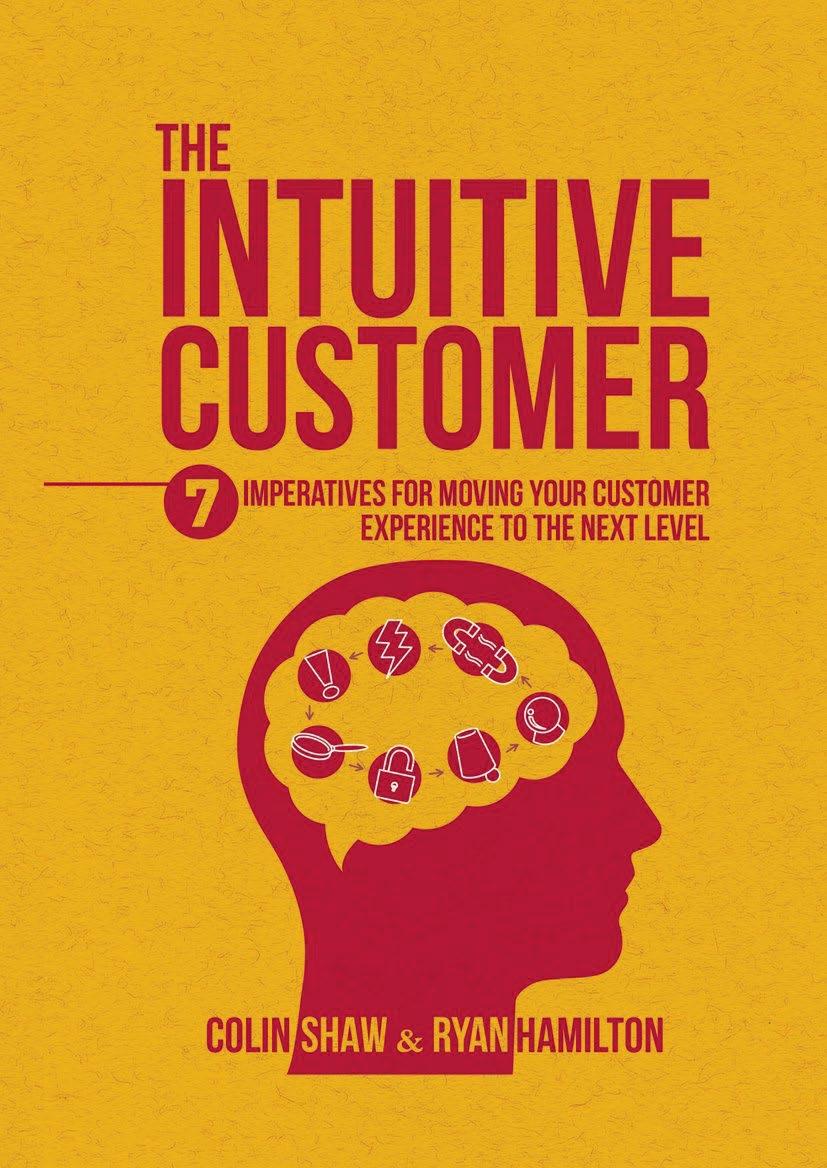

// 11 DMN.CA ❰OCTOBER 2022 INTERVIEW
STEPHEN SHAW is the Chief Strategy Officer of Kenna, a marketing solutions provider specializing in delivering a more unified customer experience. Stephen can be reached via e-mail at sshaw@kenna.ca
CONTINUED ON page 14


“The best thinking in the world means nothing unless you can operationalize it.”












Steve Shaw: You spent quite a few years in ops management at British Telecom. What was it about your experience there that inspired you to start your CX consultancy in 2002?




























Colin Shaw: Reading Pine and Gilmore’s book, The Experience Economy, which came out in 19981 I thought, bloody hell, yeah, this is going to happen. And then I spent the next couple of years trying to improve the customer experience at BT and realizing this is going to be a big area of change for business. So I had that very difficult conversation with your wife when you want to suddenly take a big career jump and think to yourself, “Well, maybe I’m going to end up in the local job center looking for a job in six months if this doesn’t work.” So I set up Beyond Philosophy back in 2002.
S. Shaw: Was CX a hard sell at that time? Customer experience was not that common a term, notwithstanding Gilmore and Pine’s best-selling book.
C. Shaw: Nobody understood what the hell customer experience was! But there were loads of people who wanted to learn about it. By then I had written my first book on the subject2 and so I had the credibility of a big publishing house.
S. Shaw: One of the main tenets of your latest book is that knowing how people actually feel about an experience, not just what they think about it, is pretty important - that loyalty is, in fact, a function of memory.
S. Shaw: People experience a rollercoaster of emotions across different channels, where you might have a bad experience here, a “meh” experience there. Do you average out those emotions? Or is it the last emotion you felt?
C. Shaw: It’s an averaging out but with a bias towards the end. So if I was to quiz you on your best restaurant, there will undoubtedly have been times when things didn’t go 100 percent well, but you’ve not written it off just yet. Or it could be that they did something really bad to you which makes you vow, “I’m never going back there again.”




S. Shaw: What was the thinking behind the Beyond Philosophy name?




C. Shaw: When I was back in corporate life, there was a load of clever people who used to come in from all of the big consultancy companies with great ideas. But when you asked, “How do we actually do that?”, they never had a straight answer. The best thinking in the world means nothing unless you can operationalize it — actually change a customer’s experience. So you’ve got to have the thinking, the strategy, the philosophy, but you’ve got to go beyond it and do something. Don’t just talk about it, do it.
S. Shaw: 2002 was very different time, very call center focused. Is that where most of your early client work was spent, improving contact centers?
C. Shaw: No, not really, although my last role in corporate life was running call centers. But no, the early work was more in strategy, helping people understand, first of all, what a customer experience is. And the second area was implementation — how do we actually do this? How do we measure it? How do we monetize it? All those types of things.

C. Shaw: Yeah, absolutely, and I think that’s probably the biggest thing I’ve learned in the last ten years. Memory is really important to customer loyalty. So there’s a guy by the name of Professor Daniel Kahneman3. He’s one of my heroes. And what Kahneman says is that we don’t choose between experiences; we choose between memories of an experience. So by definition, loyalty is a function of memory.

S. Shaw: Is that a good or bad memory, or a range of emotion, from positive to negative?

C. Shaw: Nothing is ever binary. There’s always shades of gray. What Kahneman talks about is how we remember an experience. We remember the peak emotion that we felt and we remember the end emotion that we felt4. Now to your point, the peak emotion or the end emotion could be positive or negative. It could be that you have a good peak and a bad end. So you need to understand how customers think and how they make decisions. If you’re doing journey mapping, what is the peak emotion that your customers are feeling? What is the end emotion? Is that the emotion that you want them to feel? And does that emotion drive value or not? Most organizations don’t know the emotion that they’re trying to evoke, and they certainly don’t know if it drives value. So knowing that memory is really important: what are the implications, what should I do, and how do I do it?
You are intuitively making a gut decision based upon all of those things. When I ask, “What’s the best restaurant?”, it’s an intuitive choice. You don’t sit down and say, “That’s a very interesting question, Colin. Let me get a spreadsheet out and mark down what happened each time I went there.” It’s not a rational choice, it’s an intuitive decision. The restaurant doesn’t want you to think about which restaurant you’re going to; they want you to automatically decide, “I’m going there.”







S. Shaw: In your book you use the term, “cognitive depletion” – another one is “cognitive misers”. Is that just a polite way of saying people are really lazy, irrational thinkers?



































C. Shaw: We have two ways we make decisions: intuitive and rational. The intuitive decision is made automatically. You don’t have to think about it. It doesn’t take much effort. The rational part of your brain makes rational choices. So if I said to you, “What’s 147 times 212?” you would have to sit down and think about it - and don’t ask me the answer because I haven’t got a bloody clue - but you get the idea, okay? There’s effort involved. Under normal circumstances, we make intuitive decisions because it’s easy, and it’s instantaneous, and it’s based upon what we’ve done before. Human beings have evolved to make those types of choices because thinking takes power and energy. Where do we get energy from? Food. In primitive times, food was scarce, and therefore, we developed, evolved, in a way to minimize

// 14 ❱ DMN.CA OCTOBER 2022
CONTINUED FROM page 11
INTERVIEW
effort. So cognitive depletion is a very posh way of saying, “I’m tired and I don’t wanna think about it.”




S. Shaw: Another term you use is “emotional signature” where you’ll go into a company and profile where a business is on an emotional spectrum. How hard is that to change? The example I think of immediately, because of your BT background, is telcos. The whole industry is viewed with such disdain. How is that “guilt by association” even possible to reverse?
C. Shaw: Yeah, it just seems like a race to the bottom, and why is that the case? Because the telcos are making enough money as it is! So the motivation to change is not there. The problem with telcos is they don’t want to see the opportunity. I remember talking to a bunch of German actuaries at an insurance company — and German actuaries are not exactly known for their emotional intelligence. One of the guys said to me, “Colin, I understand all this emotional stuff, but prove to me that we will gain a return from this.” And that was a very good challenge, okay? So we went on a quest trying to understand which emotions drive value. And what we discovered was that there are 20 emotions that drive and destroy value. What you want to do is define the emotional signature — the emotions you want to evoke — and then start to change the experience by evoking those emotions. Let me give you an example. Maersk is the largest container shipping company in the world. Very left-brain oriented. By focusing on the emotional parts of the experience, they improved their Net Promoter Score by 40 points over a 30-month period that led to a 10 percent rise in shipping volumes.
S. Shaw: Go back to my point about telcos: turning the ship around is a bit of a challenge, and so I presume you need to convince senior management that this is going to pay off in the end.
C. Shaw: Yeah, absolutely, and therefore, typically you do it in stages. And again, Maersk was a classic example. “Look, your marketplace is very commoditized.
The cost of shipping cargo around the world is constantly being driven down, there are more players in the market. How else are you going to compete? Don’t you think you need to look at improving the experience?” “Okay, but we don’t want to commit.”
“Okay, let’s do this research before we put a business case together.” So we put a business case together.


“Now let’s run a pilot in certain parts of the world to see if this plays out. Oh, look, it’s playing out. We’re starting to get better returns in the pilot regions. Okay, so now let’s look at rolling out.” But you’re right, it’s not instantaneous. There are quick wins that you can gain pretty instantly within the first three to six months, but to get the big returns it takes time.
S. Shaw: Another example you cite is Ricoh Canada. I think today their NPS is something like 74 percent. They credit you with being the main reason for their success. Was that because the executive management viewed the challenge as a holistic one, not a patchwork exercise?















































C. Shaw: Yeah, absolutely. So the CEO didn’t dictate to his people but he showed the opportunity that was there. We then did what we call “getting it” sessions, so in other words, getting people to understand what customer experience is, talking through case studies, showing them what other organizations had done, getting them to think about the type of thing they needed to do to change. You never get a phone call saying, “Hey, come in. We’ve decided to run a company-wide initiative to improve the experience.” You have to prove that it works. And you always get the doubters. You always get the people that don’t think it’s the right thing, and that’s fine. Just work with the people that do.
S. Shaw: Customer satisfaction is the lowest it’s been in two decades. If customer experience is so important, what accounts for the lack of progress?



















C. Shaw: The American Customer Satisfaction Index has been around now for, well, since 1994, if memory serves me correctly For the period of time between 2010 and 2019, only one third
of organizations improved their customer experience. Now for me, I am gobsmacked by that. Despite all the resources they’ve put in, despite all the consultants they’ve employed, the question clearly becomes, why? One of the big reasons is people are focused on the wrong things, okay?




So here’s the issue: You shouldn’t necessarily listen to what your customers ask for. Organizations are focusing too much on what customers are telling them they want, and it’s not what they actually want. I wish I had a dollar for every time I hear a client say, “Our customers only buy on price.” We’ve never, ever found, in the hundreds of pieces of research that we’ve done for clients, that people make a decision solely based upon price. It’s never the number one thing that’s important. There are things that are far more important than price.
The other thing that’s been happening is organizations have not really given their people the latitude to change things enough. They’ve given them responsibility without authority. And I think the third thing is that clearly the pandemic has exaggerated the cracks in organizations. So they’ve cut back on staff, they’ve stopped training people, they just want to get as many bodies as they can in the customer service center because they’ve got calls to answer. It doesn’t matter if they’re the right people or the wrong people, they just need to get people to answer phone calls. They push you to the website and the web site’s not designed to answer your questions.
S. Shaw: used to be the standard measure of customer satisfaction until NPS displaced it. Do companies need a broader basket of metrics to really improve the customer experience? C. Shaw: answer is yes. The longer answer is, I like Net Promoter and I’ve known Fred [Reichheld] for
ages. I think it is a good measure but it is only one measure. One of the key questions that we ask our clients, which is a really, really simple question that most organizations can’t answer, is, “What is the experience that you’re trying to deliver?”. And what you typically find is, people will have an opinion of what it is, but that opinion will be different depending on what part of the organization you’re dealing with. So sales will say one thing, marketing will say something else, customer service will say something else. Why am I saying this in the context of NPS? To give you an example, Maersk Line wanted their customers to trust them, to feel cared for, and to feel pleased, no matter what type of interaction. And so you measure that. You measure whether customers are feeling those things by asking them those questions directly. So I think Net Promoter is a measure which is good, and it’s simple to understand, and everything else, but there are a number of other measures that should go alongside it as well that are equally as important, and too many organizations think NPS is the ultimate answer and it’s not.

// 15 DMN.CA ❰OCTOBER 2022
“We never, ever found... that people make a decision solely based on price.”
INTERVIEW
“I believe in the stick and the carrot.”
S. Shaw: What’s the ideal customer feedback loop look like? There’s the measurement piece — got it, but what about the diagnostic part?
C. Shaw: Yeah, so I think the first thing is you need to think about different aspects of measurement and how you do it. So let me give an example. We were working with a home improvement organization who told us, “Our NPS is 27”, just picking a number, OK? So I said to them, “Well, that’s great. So which part of your journey do you need to improve to make it 30?”. “Well, I don’t know.” So you should be measuring the different parts of the journey. That’s why the feedback loop is important. The other thing is, all too often organizations are only doing research on their customers. They’re not doing research on people who have left them, and they’re not doing research on













































people who have never even been with them. And it’s the last two areas that can be the most insightful because clearly you want to find out why the customer left, and what you can do to get them back. And you want to find out what people who have never been your customer think of you.
S. Shaw: If I lose my best customer it’s going to sting at least five times more than losing a so-so customer. Retaining those high value customers is critical. If you’re going to focus on anybody, shouldn’t you focus on them?
C. Shaw: Yeah, most organizational segmentation is so poor, it’s unbelievable. “I’ve got big customers, I’ve got small customers, and I’ve got mediumsized customers,” or “I’ve got customers that buy this product or that product.” For us, some form of behavioral segmentation is key.



S. Shaw: Who should own the customer experience? You’re a big proponent of customer experience councils. And where does marketing fit into the picture? What’s the best structure for organizations to consider?











C. Shaw: Ideally, there should be a Chief Customer Officer who reports to the CEO with the authority and responsibility for the total customer experience. They would work with their colleagues in different areas to improve the experience. But in practice, very few organizations do that. What’s the role of marketing? Well, marketing is there, in my book, to say, which markets should we be in, what is our offering, what is our proposition in that market, and how are we going to go to market. But if you aren’t going to appoint a chief experience officer, I’d probably say, “Stick it in marketing”. But the reality is I’ve worked in organizations where marketing create brochures. They are functions of sales teams rather than anything else, particularly in the B2B space. Therefore from a more pragmatic perspective, I would ask, “Is there someone, or some part of the organization, with the respect of everyone who can help to drive change?”
S. Shaw: What’s the best way to overcome internal resistance to change? Do you go down the path of incentives? Is this why it’s really critical that the CCO is reporting up to the CEO and not the COO to have the authority and sway to be able to overcome those forces of resistance?
C. Shaw: Go back to our conversation about the telcos. They clearly don’t believe that they need to do much, otherwise they would be doing it. So you need to create a sense of urgency. The other thing I would say is you’ve got to tell people what kind of experience you’re trying to deliver. You then have to turn around and say, “The implications are you need to do this. And this is how we’re going to measure you, and this is how we’re going to reward you”. I believe in the stick and the carrot. If you don’t achieve your measures after us coaching you and doing all the right things from a management perspective, then maybe you’re not the right person for this role. And the carrot is, if you achieve your target, here’s an incentive for you. Here’s a bonus for you to help us achieve those targets.


S. Shaw: Right. But also, importantly, I imagine the C-suite can’t be sending the wrong signals either. So to your point that you made earlier in this interview, you have companies, especially through the pandemic, cutting back staff, budgets, etc., sending the signal that profits trump purpose.
C. Shaw: You’re making me think about a conversation I had with Glenn Laverty, who was the CEO at Ricoh. I asked him one day, “Glenn, if you had your time over again, what would you do differently?”. Now bear in mind that Ricoh improved their Net Promoter Score by 34 points over a 30-month period which led to a 10 percent rise in a shrinking printer market. He said, “I would’ve got customer experience measures across the organization sooner than I did.”
S. Shaw: You like to take clients on study tours of best-in-class companies. What do these companies have in common?
C. Shaw: They believe that improving the customer experience will make more money for them, more profit. It’s about the mindset of the senior team that permeates through the organization. If the mindset is only about profitability, process, transactions, then guess what? The customer experience ends up being about cost cutting. So it’s the mindset.

S. Shaw: So the mindset of putting customers first drives business value?






C. Shaw: So yes, but the only caveat I would say is — because this is where people do make a mistake — putting customers first does not mean that you should give customers everything that they want. There are some things you can’t do because it doesn’t make logical business sense. But the mindset of the organization is the key.
1. The “Experience Economy” is a term first used in a 1998 HBR article by B. Joseph Pine II and James H. Gilmore, later to become a book by the same name.




2. “Building Great Customer Experiences”, Palgrave Macmillan; 2002









3. Daniel Kahneman is an Israeli American psychologist and economist renowned for his work on the psychology of judgment and decision-making.
4. The peak–end rule states that our overall impression of past events is determined by we feel at its peaks and at its end.












5. The American Customer Satisfaction Index is an economic indicator that measures the satisfaction of consumers across the U.S. economy.

❱ DMN.CA OCTOBER 2022
// 16
INTERVIEW
Business to Business in 2023 Content is King: What Does it Mean?
BY GABRIELLA CIACCIO
e’ve said it before and we’ll say it again: content is king! But “content” can mean a lot of things and go in a lot of different directions. These B2B content marketing trends will reveal what’s working and what’s not in the broad world of content, so you can meet — and exceed — your marketing goals.
“Do” SEO for Users, Not for the Sake of “Doing SEO”

WOverusing keywords in order to appear on Google’s first page of search results might temporarily land you where you want to be (although Google is cracking down on this), but does it actually provide users with what they are looking for? Content creators are often obsessed with conforming to


SEO needs, but creating something just to meet the needs of an algorithm isn’t going to give users what they actually want. In fact, the algorithm itself is telling content creators to avoid creating content for search engines first.

If your content is genuinely informative and well-written, you will naturally show up in the top Google search results. At the end
of the day, it’s a better use of your time to write user-focused content rather than to formulate content just for the sake of SEO.
Generate UserFocused Content (Beyond Blogs)

In the same vein, it’s always important to create content around users, and not just when it comes to SEO.

// 17 DMN.CA ❰OCTOBER 2022
2023’s B2B content STRATEGY ISTOCK/ DZIGGYFOTO
❯
marketing trends are going to bring emphasis to user-focused content across the board. In marketing, it’s easy to strategize with your business goals in mind, but what about your buyers’ goals? Again, will your content actually meet their needs?
Here are a few questions you can ask yourself when creating content solely with your users in mind:
❯ Is this content informative and useful?















❯ Does this content engage my audience?


Does this content provide users with something they can’t find elsewhere?
❯ Is this the right format to present this content (should it be in a blog, infographic, video, quiz, etc.)?
Try Dynamic and Interactive Experiential Content
Stand-still content doesn’t always cut it — you also need dynamic content to help users understand the information you are trying to convey. After all, in the spirit of focusing on the users, everyone consumes and synthesizes content in different ways. Some people like articles; others want to watch a video.
For example, instead of reading a blog post about a certain topic, a user might benefit more by taking an assessment or skimming through an infographic. And in addition to providing the reader with an experience, dynamic and interactive content are more likely to produce clicks and leads.
Integrate Video
Strategically Video has always been a strong content tool, as it is a dynamic, captivating way to convey information to an audience. However, B2B marketers have the tendency to use videos in places where they don’t add value, which is a waste of time and resources.
If you want to use video in your marketing strategy, you need to integrate it properly, where it’s really needed. Don’t make a video just for the sake of making a video — use this tool to better engage with your audience.
For example, more and more B2B marketing agencies are using


short form explainer videos in both web and social to diver deeper in a topic. These videos have a clear purpose and are used solely to get something across to the audience. Integrating these videos adds more value to information that already exists and doesn’t seem redundant or unnecessary.
Tell Human and Data-Driven Stories
Telling a story is a great way to appeal to users in an emotional and vulnerable way, but if there’s data backing up that story, the content becomes much more useful (especially for B2B!).
For example, if you create a case study around a real problem a client had and how you solved it using certain products or services — and then prove it with real numbers — boom. Now, your story doesn’t just tell your audience to hire your B2B company, it shows them why they should.
Start a Podcast Podcasting became huge in 2022 for B2B companies, and it’s going to get even bigger in 2023. This unique content format is a fun, personal way to connect with your audience, as you can talk to them about anything you want. This works very well if you want to convey something that’s a little too complicated to explain through the written word; even better if you host an insightful discussion with an industry peer.
Publish Original Research and Case Studies

Publishing your own original research and case studies not only provides your audience with useful information but also positions you as an expert in your field. When clients see that you have taken the time to create case studies and conduct your own research, they will have even more reason to trust your company and hire you for a project.
Create Content for Interactive Virtual Events

The pandemic certainly changed trade shows and events, and, as time goes on, the need for both
virtual and in-person options will continue. B2B content marketers who want to communicate with their audiences should continue to utilize virtual options in 2023 and beyond. Real-time polls, live quizzes and other fun forms of content should be incorporated into virtual events to create dialogue that may not happen otherwise.
Create Shoppable Content
Shoppable
content is an interesting B2B content marketing trend for B2B e-commerce marketers in particular. This content improves the buyer experience by creating a seamless flow throughout the buying phase. As users scroll through videos, articles and other pieces of content, they can click through to make a purchase with the tap of a finger. While B2B buying is not as instant as B2C buying, this is an interesting avenue to explore to capture buyers as soon as they’re ready.
Consider Influencer Content Marketing
The more users can relate to something, the more likely they are to click through and make a purchase, and this will become even more relevant in 2023.
Influencer marketing wasn’t always taken seriously, but now it’s a proven strategy that can bring more clients to your company. When an influencer writes an article or makes a video about how great a product or service is, people pay attention and are able to form a better understanding of how that same product or service can be useful to them. Don’t be afraid to experiment and use influencer content marketing to your advantage.
Keep Content Concise - Not TL;DR
The human attention span keeps going down while content length keeps going up. When you get straight to the point, the reader is more likely to actually read your content, instead of just aimlessly scrolling through it and not walking away with any real information. Keeping content on the shorter side doesn’t mean you’re not providing enough for your audience, it means you’re providing
exactly what they need without the fluff they don’t want. Also, feel free to repurpose some of your old content by shortening it and making it easier for users to navigate.

This doesn’t mean you have to give up on long-form content entirely, either. Just make sure it’s readable with plenty of white space and headlines to guide your reader through the piece.
Give AI-Powered Content a Shot
AI-powered content might be the biggest game changer for content creators yet. A tool that we once thought was so far in the future is right here at our doorstep. Using AI to produce content can save you and the rest of your content creation team a significant amount of time, and it will also provide insights that will make your content more effective. While
AI is not going to give you publishready results, it will, however, give you — the content creator — a really good start.
Ensure Your Content Is Empathetic, Inclusive and Diverse
While this one will be trending, we shouldn’t think of it as a trend. It’s always important to create content empathetically while thinking of how your words will affect everyone.
Make sure when you’re creating content, especially around sensitive or controversial topics, that you find ways to appeal to all readers, regardless of race, gender or bodily capabilities. The more inclusive your content is, the more people will read it and will respect your company for taking the time to construct the content thoughtfully.
Final Thoughts
There is a lot to consider when it comes to content marketing, especially as trends and best practices evolve. We hope these B2B content marketing trends and tips will help you find the best ways to maximize your efforts.
GABRIELLA CIACCIO is a creative writer with Altitude Marketing, with more than ten years of copywriting experience. She crafts content that increases brand awareness, boosts website traffic, drives leads and engages a client’s idea audience.
// 18 ❱ DMN.CA OCTOBER 2022
STRATEGY
8 Digital Marketing Trends to Watch in 2023
BY AZEEM ADAM
The internet has conditioned customers to demand instant gratification, and that’s only set to continue. In 2023, customers will expect a response time of just hours. No more sending an email and waiting days for a reply. If your digital marketing agency is going to be able to reach these expectations, you need new strategies in place.
You may have come across the word digital marketing and have wondered what it really means. Digital marketing is the process of promoting brands, products, or services using digital technologies such as the internet, social media,
and mobile devices (among others).
In recent years, this increasingly popular method of advertising has become an important part of any company’s marketing plan, whether they are large or small, local or international. Below are eight trends you should watch in the world of digital marketing in 2023...
Digital Marketing Agency will be Key

There are a number of trends that will affect digital marketing in the coming years, and most of them revolve around digital marketing agencies.
Over time, small businesses have lost their foothold over
larger ones, as small shops can’t compete with big brands. As more and more brands establish digital marketing agencies, it’s safe to say that these companies will become a vital resource for companies large and small.
In fact, some digital marketing agencies are already doing just that. For example, DigitasLBi has established partnerships with both small and large brands alike — including Ford Motor Company and Lululemon Athletica — to create digital strategies tailored to each company’s specific needs.
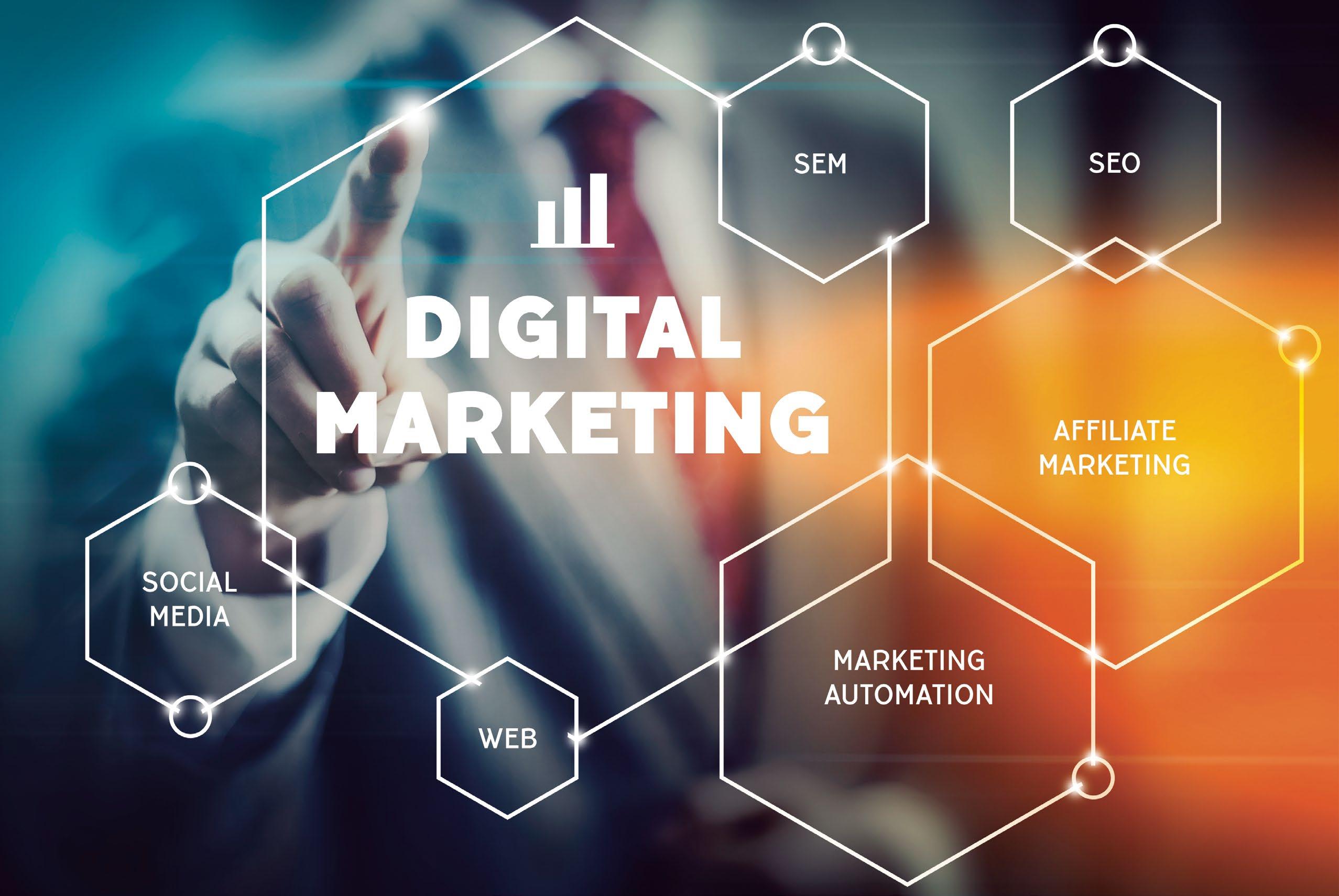
In other words, digital marketing agencies may very well be on track to becoming an essential part of
every brand’s toolkit — no matter how big or small they may be.
This trend is sure to only grow in popularity. Digital media is rapidly growing, which means digital marketing is going to grow along with it. Since 2015, Google searches for digital marketing have increased by nearly 90 percent — and that growth isn’t expected to slow down anytime soon.
Performance Marketing will Rise
In 2019, digital marketing will continue its evolution away from engagement and toward performance-based pay. As platforms such as Facebook,
// 19 DMN.CA ❰OCTOBER 2022
1 2 TRENDS & RESEARCH
ISTOCK/ MIKKO LEMOLA
Google, Twitter, and Pinterest become less effective at driving conversions, businesses will increasingly look for alternative platforms that can drive revenue.
And many brands are already turning to performance marketing networks (PMNs) like MediaMath and The Trade Desk—PMNs that buy media on behalf of clients, aiming for outcomes rather than merely impressions. While PMNs still account for a small percentage of overall digital ad spend, their share is growing quickly. By 2020, eMarketer predicts it will be nearly 10 percent.
This growth will no doubt accelerate in the coming years as more digital marketers adopt PMNs’ data-driven approach to buying ads.
And if you think about it, there’s little reason why digital marketing should be any different from other forms of advertising: Why shouldn’t advertisers want results? After all, we don’t accept clicks or impressions when we advertise our physical products; why should digital advertising be any different?
3
Real-Time Messaging Platforms will Become Data Hubs
Customers want their messages, concerns, and questions addressed as soon as they arrive. That’s why real-time messaging platforms are growing in popularity and becoming increasingly important tools for digital marketers.
As these platforms mature, they’ll offer more features that allow brands to capitalize on customer data. The best of these will be able to act as personalized data hubs for digital marketing initiatives.
For example, imagine a platform like Facebook Messenger or WhatsApp being able to store a customer’s personal information — name, address, contact info — and then use it to automatically populate fields in forms and landing pages when customers communicate with your brand.
This would make digital marketing campaigns much easier for you to manage and would also help you build stronger relationships with customers.
It won’t happen overnight, but as digital marketers become savvier about how to use real-time
messaging platforms effectively, we can expect more brands to turn them into valuable data resources.
Marketers have to Start Integrating Chatbots into their Strategies
In 2019, marketers will begin investing more in chatbots and AI-based digital assistants, says Sean Blanchfield, CEO of the Mad digital marketing agency. This is going to be a game-changer for small businesses that are willing to invest their time and money into creating a personalized experience for each customer.
We’re already seeing some agencies make huge strides with these technologies.
For example, one digital marketing agency created an entire chatbot dedicated to helping people find their perfect pair of jeans. The bot asks customers questions about what they like and dislikes about other pairs they own or have tried on before, as well as their personal style preferences. The bot then sends them a curated list of options based on those answers.
A similar strategy can work for any business selling clothing or accessories — and it doesn’t even have to be an eCommerce store!
4 5
There will be More Creativity on Display
By 2022, more than half of all business interactions will take place through digital channels. Naturally, these interactions — and any accompanying marketing campaigns — will be loaded with creativity.
In order to stand out online brands will need to showcase a bit of personality while they’re marketing their products and services. This means that digital marketing agencies will have to think outside of traditional advertising methods. Rather than using billboards or TV commercials.
For example, digital marketers might use video-based platforms like Facebook Live or Snapchat to reach new audiences, instead of focusing on print media, such as magazines and newspapers.
Businesses may focus on creating content that people can easily share across social media. The bottom line: If you want your brand to stick out in 2023, you’ll need to get creative.
Influencer Marketing will Grow to $16.4 Billion by 2023
Marketers know that social media marketing is changing, and soon so will digital marketing. More than $16 billion will be spent on influencer-marketing programs by 2023.
As social networks are adapting their algorithms to surface sponsored content more prominently. This is a natural result of digital marketers shifting their focus from pure engagement to conversion-centric strategies.
Once users’ organic reach has fallen below a certain threshold, they need to pay for their brand exposure. Influencers with large followings will become digital marketing agencies themselves, making money off endorsements and affiliate links.
The most successful digital marketers will be those who can create trust between customers and brands through transparency and authenticity.
For example, if an Instagram star writes about how much she loves her yoga mat. Followers might click through to buy it online — and maybe even use an affiliate link to do so.
In order to achieve these results, digital marketers must develop a deep understanding of their target audience and then design campaigns that resonate with them. As consumers continue to demand transparency across all channels, digital marketers will respond accordingly.
6 7
Customers want Instant Gratification
The internet has conditioned customers to demand instant gratification, and that’s only set to continue. In 2023, customers will expect a response time of just hours. No more sending an email and waiting days for a reply. If your digital marketing agency is not going to be able to reach these expectations, you need new strategies in place.
A proactive approach instead of a reactive one might be exactly what your customers are looking for.
Instead of having to contact your digital marketing agency whenever they have a problem with their campaign, try thinking about ways you can solve their problems
before they even arise. That way, when something does go wrong with their campaign, they won’t feel like they have to go through hoops just to get help.
Customers want instant gratification, and it doesn’t matter if it comes from shopping online or receiving customer service over social media channels — they expect immediate responses on all fronts. So, if you want to stay ahead of your competition make sure your digital marketing agency is ready to deliver as soon as possible.
8
The Power of Big Data Continue to Grow
Our dependence on big data is as inescapable as it is transformative. That’s why businesses will continue to get savvier about collecting and analyzing information, by integrating it into their digital marketing campaigns and relying on it for decision-making purposes.
This won’t change even with looming regulations that could impact how businesses use data. So those playing catch-up may want to consider taking matters into their own hands by launching a digital marketing agency today.
An experienced digital marketing agency can help business owners develop strategies that leverage current technologies and best practices. For example, one of our clients recently worked with us to launch an innovative new ad campaign designed around Google AdWords and Display Networks ads (Facebook included).
The end result was better performance across all channels — and measurable results from digital marketing efforts. It also helped our client generate more leads than ever before. If you’re interested in learning more about digital marketing trends or are thinking about starting your own digital marketing agency, contact us today to learn more!
AZEEM ADAM is a professional Content writer & Content Marketer. He is an author and blogger with experience in encountering composing on various topics including Digital marketing but not limited to Marketing Azeem can write about Business, Education, Home, Décor, Technology, Food, Health, Lifestyle, Services, Beauty, etc.
// 20 ❱ DMN.CA OCTOBER 2022
TRENDS & RESEARCH


















Resource Directory // 21 Your Source For Premium Email & Phone Appending Grow & Enhance your Direct Mail Lists with: Data Appending Mailing Lists Email Appends: Grow your list by 40% Phone Appends: Boost telemarketing lists Free Match Test: See how many we can add Consumer & Business Records: U.S. & Canada NCOA Sales Leads 1-800-MELISSA MelissaDirect.com LIST SERVICES LIST SERVICES BETTER DATA FRom CANADA’S LEADER iN CoNTACT DATA SoLu TioNS Ask for a FREE EvALuATioN and pricing! 1-800-454-0223 sales@cleanlist.ca cleanlist.ca ) an interact direct company Date: July 4, 2013 Client: Cleanlist.ca Docket: 3540 Application: Print, 4x4.325", 4C AD: Carter AM: Sinclair Version: F6 Media: Direct Marketing Magazine PLEASE NOTE This file has been optimized for its intended application only. For uses other than intended please contact Seed for alternate formats. Data Cleaning • Address Correction • Mover Update • Deceased Identification Data Enhancement • Phone Append • Demographics Prospect Databases • ResponseCanada • Consumers, Movers and Businesses Custom Solutions CL_ResourceAd_4x4.325_v04.indd 1 DATA ANALYTICS SoapStix Portable Soap Spray Wash Hands... Anywhere! Toothbrush Caddy Hygiene Dental CareFanatic FAN Souvenir Pennant How to Increase Fundraising with Unique Functional Products Make a lasting impression with these great promotional incentives. When planning your next fundraising event or function look at adding some timely products with your message and sponsor that will have much greater impact with everyone. For more information contact: promotional@stixbrandsinternational.com To advertise in DM Magazine Resource Directory Contact: Steve Lloyd, steve@dmn.ca
Today’s Top 5 Third-Party Logistics Trends
BY HAMED AMIRI
The past couple of years have been wild years for the logistics industry as the COVID-19 pandemic broke e-commerce sales records and had retailers rethinking how to best serve their customers.
The shift to more e-commerce also meant that it would be harder to find warehouse space across Canada and the world. According to CBRE Ltd’s Canada Market Outlook 2021 report, for every $1 billion in eCommerce sales, 1.25 million sq. ft. of additional warehouse space was needed. That number is probably even higher for 2022 with ongoing supply chain issues.
Now these are just a couple of the third-party logistics trends that have taken place over the last couple of years, but it doesn’t come without any headaches. The ongoing growth in the industry has also caused chaos on the global supply chain and these issues aren’t going to be resolved anytime soon. During the holiday season in 2021, Western Europe and China’s Henan province, which is a key transport hub, both were impacted by devastating floods. Key transportation routes have been damaged and the flood waters even wrecked warehouses.
With 2022 and 2021 as rough times for the logistics industry, there are some exciting trends to keep an eye on for now and in the future. Here are the 5 third-party logistics trends you need to know about today, and in 2023 and beyond.

Omnichannel Shipping
First on our third-party logistics trends list is omnichannel shipping. Customer shopping experiences and expectations have shifted
dramatically, making omnichannel fulfilment is more important than ever before.
The “Amazon effect,” is defined as “the impact created by the online, eCommerce, or digital marketplace on the traditional brick and mortar business model that is the result of the change in shopping patterns, customer expectations, and the industry’s competitive landscape. The Amazon effect is forcing retailers to offer more omnichannel touchpoints to increase customer satisfaction. Retailers need to offer their customers an easy way to shop whether that be in-store or digitally. The supply chain has become more complex than ever before and if you want to stay ahead of your competitors and ensure your customers loyalty, omnichannel shipping must be something your brand utilizes.
Big Data
Big data is one of those third-party logistics trends that when used properly, make your brand efficient and help you save money. GPS and other tracking devices allow logistics companies to monitor the movement of goods in real-time. That information is combined with traffic data, fleet data, and on-road network data to help maximize delivery routes, while also driving up profits.
One big cost that can be brought down with the use of big data is fuel consumption. Gas prices are at an all-time high right now and reducing fuel usage is a must. Saving on fuel also means brands can consciously be aware of their environmental impact and commit to protecting it. Another big data outcome related to route optimization is to decrease mileage. Brands can further save
more on fuel and slow down how quickly cars begin to deteriorate during day-to-day operations.
Last-Mile Delivery
Last mile, in supply chain management and transportation planning, is the last leg of a journey comprising the movement of people and goods from a transportation hub to a final destination. With the rapid growth of eCommerce and changing retail conditions, last-mile delivery has taken on more importance for businesses in today’s economy. Having a sound last-mile delivery strategy will keep your customers loyal and attract new ones.
Integrated 3PL services
This is one of those third-party logistics trends that will be extremely important for years to come. You need a 3PL provider that can provide you individual services, but also have the capability to combine them for full effect.
For example, here at Evolution Fulfilment, we offer a handful of different fulfilment services to advance your distribution strategy.
These services include:
❯ Brand Fulfillment Model: A turnkey alternative to the traditional distribution model that keeps control – and margins – in your hands. Learn more about our unique North American distribution model that we call Brand Fulfillment.
❯ Amazon FBA Prep Service: Gain access to the massive marketplace that is Amazon without the hassle or headaches of fulfilling orders.
❯ Cross Border Domesticated Shipping Service: Imagine shipping directly to your US customers in a way that’s both
cheaper and faster? If you’re a Canadian brand with $250K+ in annual revenue, you should definitely learn more about our cross border domesticated shipping service.
❯ B2B Order Fulfillment Service: A business-to-business retail distribution service that adheres to strict guidelines and is customized to suit your logistical needs (pick and pack, cross docking, etc).
❯ B2C Order Fulfillment Service: A direct-to-consumer (B2C) pick and pack Canadian fulfillment service based in Vancouver, Canada with same day turnaround and a polished consumer experience.
❯ Dedicated North American Warehousing: An eCommerce warehousing partner that acts as an extension of your company.
❯ Returns Management: Avoid the distraction and hassle of inevitable product returns.
❯ Admin Support Services: Focus on your core business by outsourcing accounting and financial processes to experts.
Green Supply Chains
Last on our third-party logistics trends list is green supply chains. Advocacy groups are increasingly pushing for more environmentallyfriendly business practices and consumers want to do their part as well.
Different parts of the supply chain have a role to play in creating a more green future. Whether that’s adopting energy management systems, or switching to more electric vehicles, brands can significantly reduce their carbon footprint.
HAMED AMIRI is a marketing specialist with Evolution Group of Companies, based in Delta, BC.

// 22 ❱ DMN.CA OCTOBER 2022
FULFILLMENT ISTOCK/ TRIFONOV_EVGENIY









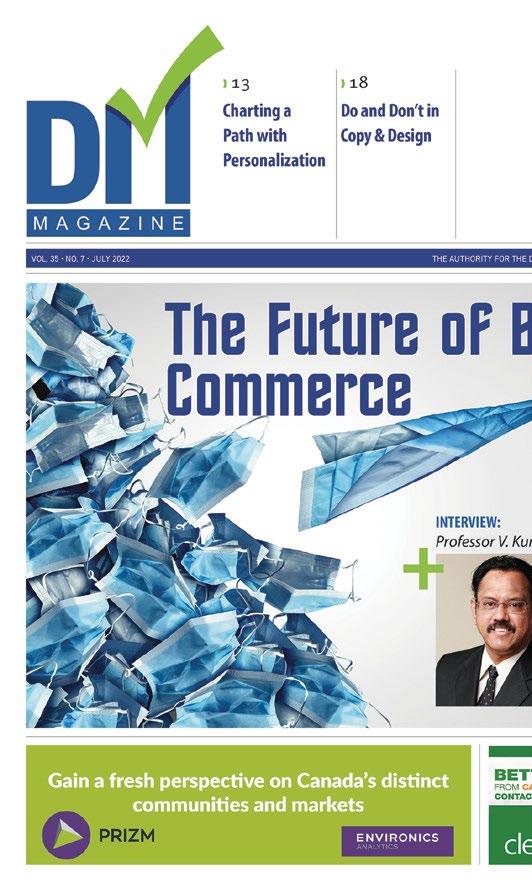




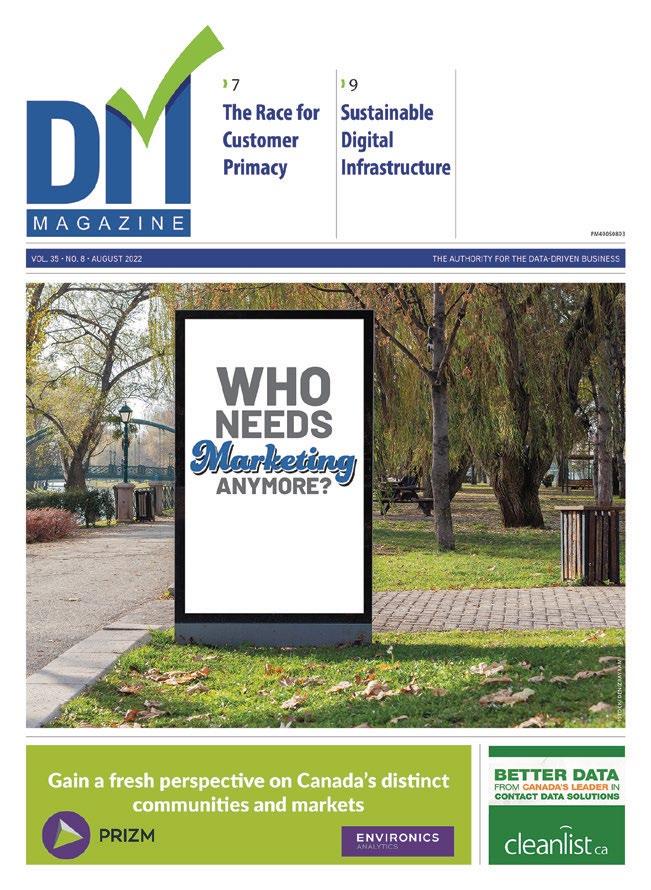






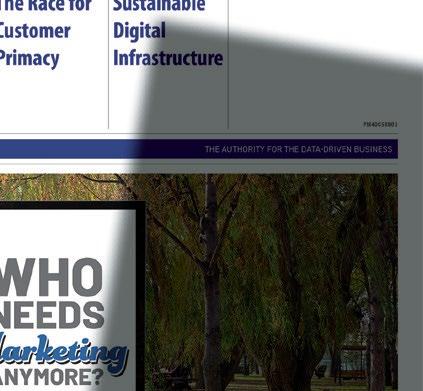
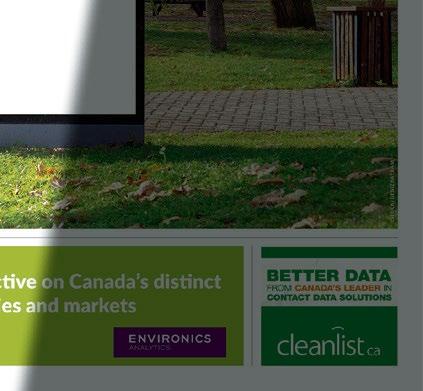

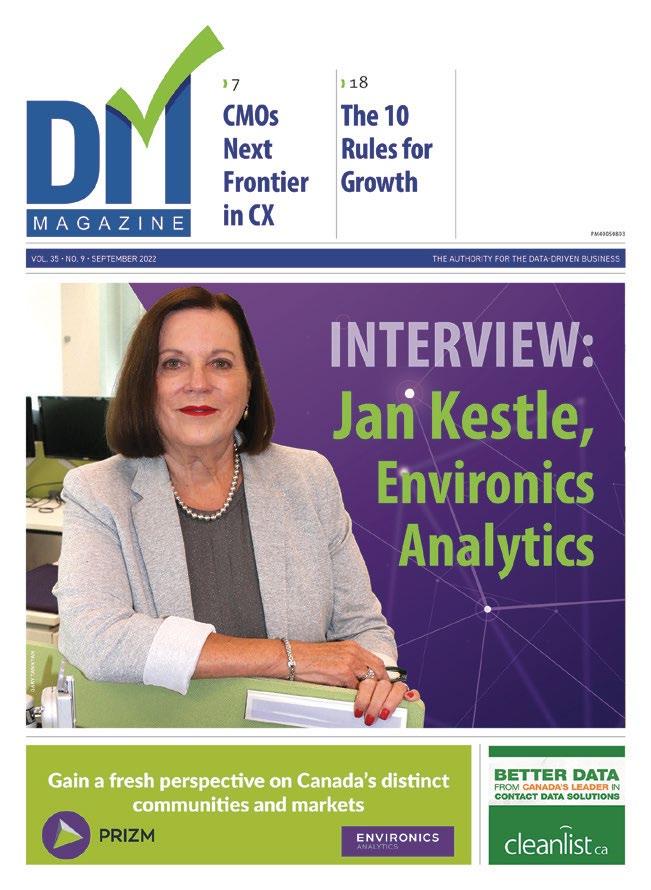
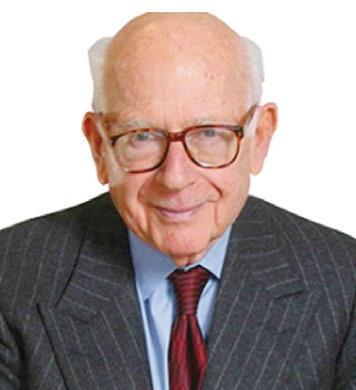
Gain a fresh perspective on Canada’s distinct communities and markets






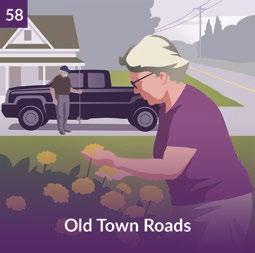






















With segments like The A-List, Metro Melting Pot and Silver Flats, PRIZM’s 67 lifestyle segments help you create the personalized customer experience and communication to drive acquisition, engagement and loyalty.








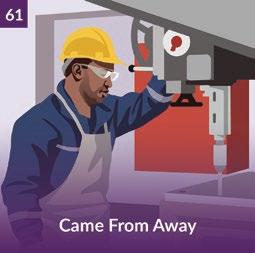

















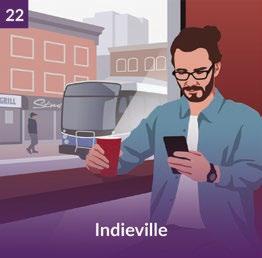











www.environicsanalytics.com

























































































 BY LYRA HANKINS
BY LYRA HANKINS















































































































































































































































